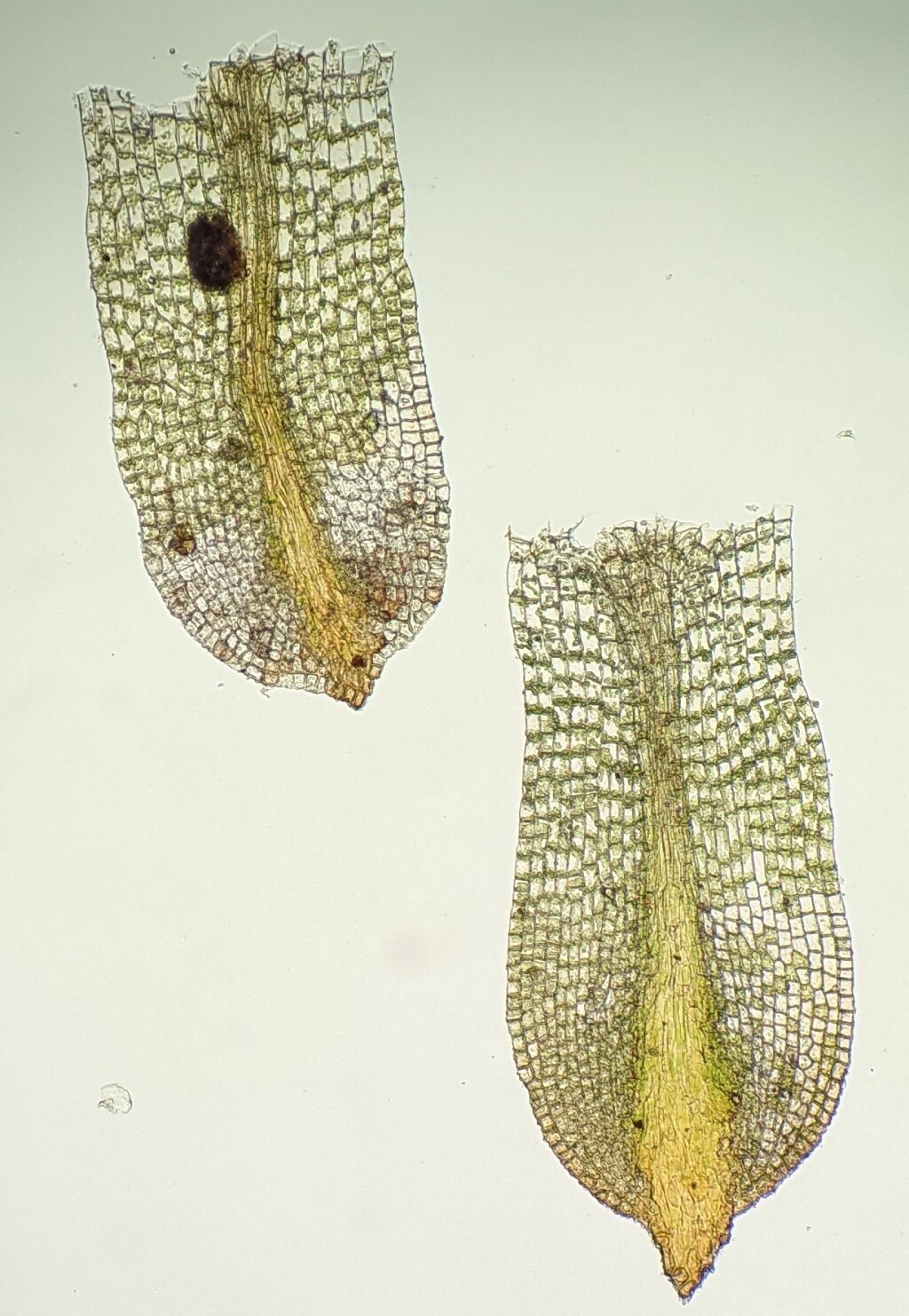Stonea
Probably dioicous. Asexual reproduction by caducous innermost leaves with an oil-rich costa broadened to almost width of leaf. Plants gregarious, mostly buried in soil. Stems to 0.5 mm long, mostly simple, fleshy, pale, densely covered with whitish rhizoids at base; central stand absent; sclerodermis absent; hyalodermis absent. Leaves ovate, obovate, spathulate, suborbicular or short-lingulate, sometimes wider than long, widely spreading when moist, incurved when dry; apex rounded or obtuse, with or without an apiculus, usually cucullate; costa absent or weak and pale in smallest leaves or leaf bases, otherwise subpercurrent or percurrent, with quadrate adaxial superficial cells, with a differentiated adaxial epidermis, with a weak stereid band, without a hydroid strand, sometimes with a differentiated abaxial epidermis, with elongate abaxial superficial cells; margin entire or slightly crenulate near base or toward apex, plane, without a border; laminal cells sometimes oblate, quadrate, some short-rectangular at base, smooth or uni- or pluripapillose abaxially near costa at apex, with a red KOH reaction. Sporophytes unknown.
One species in dry regions of the southern Australian mainland, south of the Tropic of Capricorn.
 Spinning
Spinning

